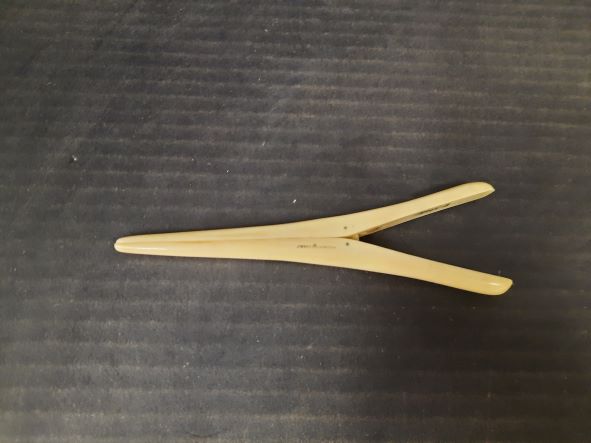
French Ivory Glove Stretcher
French ivory glove stretcher. A plastic produced to simulate ivory
In the late 19th century, a type of synthetic material was created to imitate natural ivory which was expensive and difficult to obtain. The result was French Ivory, first produced by the Xylonite Company in 1866. The material, often also known as ivoride, ivorine, and pyralin, is made from celluloid, a type of thermoplastic that was very popular until the middle of the 20th century. It has a series of parallel lines on the surface that help differentiate it from natural ivory, and it weighs less than ivory, but it was popular in use for things like flatware handles, gaming pieces, furniture decorations, and many other items that are now popularized in antiques. The earliest attempts to make an artificial substitute for ivory were ineffective, but by adding camphor to the mixture, French Ivory was created at a relatively low cost compared to the natural alternative. (Taken from the Joseph Jewelry website)